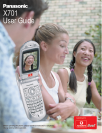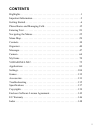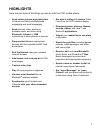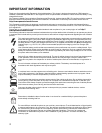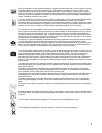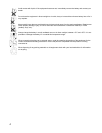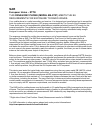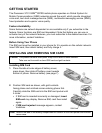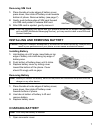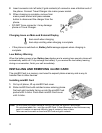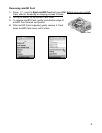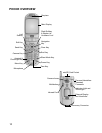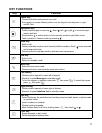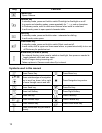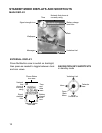
2
IMPORTANT INFORMATION
Thank you for purchasing this Panasonic digital cellular phone. This phone is designed to operate on GSM networks –
GSM900, GSM1800 and GSM1900. It also supports GPRS for packet data connections. Please ensure the battery is fully
charged before use.
We, Panasonic Mobile Communications Development of Europe Ltd., declare that the EB-X701 conforms with the essential
and other relevant requirements of the directive 1999/5/EC. A declaration of conformity to this effect can be found at
http://www.panasonicmobile.com
This Panasonic mobile phone is designed, manufactured and tested to ensure that it complies with the specifications
covering RF exposure guidelines applicable at the time of manufacture, in accordance with EU, USA FCC and Australian
ACA regulations.
Please refer to our website for latest information/standards and compliance in your country/region of use http://
www.panasonicmobile.com
.
The following information should be read and understood as it provides details which will enable you to operate your phone
in a manner which is both safe to you and your environment, and conforms to legal requirements regarding the use of cellular
phones.
This equipment should only be charged with approved charging equipment to ensure optimum performance
and avoid damage to your phone. Other usage will invalidate any approval given to this apparatus and may
be dangerous. Ensure the voltage rating of the Fast Travel Charger is compatible with the area of use when
travelling abroad. A Fast Travel Charger (EB-CAX70xx*) is supplied with the Main Kit. (Note xx identifies the
Charger region, e.g. CN, EU, UK.) Other recommended equipment for charging is the Car Charger (EB-
CDX70)
Use of another battery pack than that recommended by the manufacturer may result in a safety hazard. If you
use a feature which keeps the key backlight on continuously for a long time, such as a game or the browser,
battery life will become extremely short. To maintain longer battery life, set the key backlight to off. Do not use
this phone without the battery cover attached.
Switch off your cellular phone when in an aircraft. The use of cellular phones in an aircraft may be dangerous
to the operation of the aircraft, disrupt the cellular network and may be illegal. Failure to observe this
instruction may lead to the suspension or denial of cellular phone services to the offender, or legal action or
both.
Do not incinerate or dispose of the battery as ordinary rubbish. The battery must be disposed of in
accordance with local regulations and may be recycled.
It is advised not to use the equipment at a refuelling point. Users are reminded to observe restrictions on the
use of radio equipment in fuel depots, chemical plants or where blasting operations are in progress. Never
expose the battery to extreme temperatures (in excess of 60°C).
It is imperative that the driver exercises proper control of the vehicle at all times. Do not hold a phone while
you are driving; find a safe place to stop first. Do not speak into a handsfree microphone if it will take your
mind off the road. Always acquaint yourself thoroughly with restrictions concerning the use of cellular phones
within the area where you are driving and observe them at all times.
Care must be taken when using the phone in close proximity to personal medical devices, such as
pacemakers and hearing aids.
Remember to disable the alarm function when in an aircraft or a medical facility to prevent the phone
automatically switching itself on.
For most efficient use hold the phone as you would any normal phone. To avoid deterioration of signal quality
or antenna performance, do not touch or “cup” the antenna area while the phone is switched on.Do not leave
the camera facing direct sunlight to avoid impairing camera performance. Unauthorised modifications or
attachments may damage the phone and violate applicable regulations. The use of an unapproved
modification or attachment may result in the invalidation of your guarantee – this does not affect your
statutory rights.



